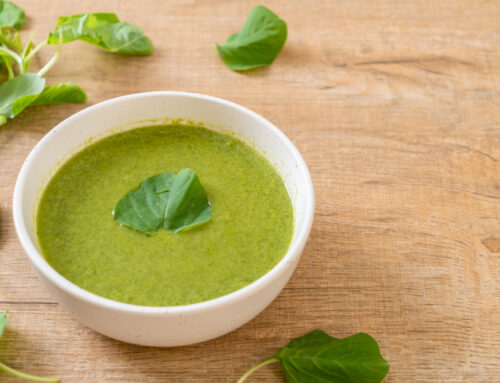by Kathleen Regan, ND
What are Migraines?
Migraine headaches, characterized by intense pain, often come with symptoms such as sensitivity to light and sound, nausea, and fatigue. Diet plays a key role in managing these episodes. Research indicates that certain foods can either trigger or help reduce the frequency and severity of migraines. Identifying and avoiding foods that cause migraines, while incorporating migraine-reducing foods into your diet, can be a proactive approach to minimizing symptoms. This strategy is part of a broader migraine diet plan that aims to identify dietary causes of migraines and employ natural remedies for migraine headaches.
Ketogenic Diet or Modified Atkins Diet:
This high-fat, low-carb diet produces something called ‘ketone bodies’ which are thought to help with migraines through:
• Improving metabolism,
• balancing neurotransmitters (brain chemicals),
• reducing oxidative stress,
• anti-inflammatory effects,
• gene modifying effects
Modified versions of the keto diet have been explored for migraine management, including the Modified Atkins Diet, which has shown benefits for those suffering from migraines and other headache disorders. The keto diet, recognized for its potential in treating neurological disorders like epilepsy, has also been linked to migraine treatment, with studies indicating a high response rate in reducing migraine frequency and severity. This aligns with the idea that specific food choices, particularly those low in carbohydrates and high in fat, can influence migraine episodes. The typical macronutrient distribution in a ketogenic diet—approximately 5-10% carbohydrates, 55-75% fat, and 15-35% protein—suggests that a low-carb diet, with foods like seafood, nonstarchy vegetables and eggs, might help manage migraine symptoms. However, such a diet must be medically supervised to avoid any adverse effects, such as a headache from the keto diet or nutritional deficiencies, thereby ensuring it contributes positively to migraine prevention and the individual’s overall health.
Low Glycemic Index Diet:
The low glycemic index program allows between 40-60g of carbohydrates per day from low glycemic index sources such as milk, pasta, grainy bread, oats and lentils. In this program, fats make up 60% of caloric intake, while protein makes up 20-30% of caloric intake. Consuming fewer carbohydrates is considered a healthy intervention for many health concerns. For migraine sufferers, it has shown benefits similar to medications in reducing the frequency of attacks and, with long-term dietary changes, the intensity of attacks.
Low Fat Diet:
Research indicates that low-fat diets, with an intake of less than 20g per day, could potentially alleviate headache intensity and frequency. This suggests a connection between dietary fat quality and the type of fat consumed and migraine triggers. Specifically, incorporating high Omega 3 and low Omega 6 fats from foods like tuna, leafy greens and kidney beans into the diet may offer relief for those suffering from migraines.
Low Histamine Diet:
The link between migraine and allergy sufferers is notable, with studies suggesting a potential connection between histamine levels and migraine frequency. Research has shown that adopting a low histamine diet, avoiding foods like packaged meat, aged cheese and fermented food could be an effective approach to managing both migraines and allergy symptoms. By reducing histamine intake through dietary adjustments, individuals may experience a decrease in the frequency of migraine episodes, providing relief from both migraine symptoms and allergy-related discomfort. Learn more about high histamine here.
Elimination Diets:
Elimination diets may be standardized or personalized. A standard elimination diet considers foods commonly known to trigger inflammation, while a personalized approach uses an IgG Food Sensitivity Test to identify food triggers. A naturopathic consultation can help identify which of these foods may be a trigger
A number of dietary triggers are linked to migraines, including:
• chocolate,
• caffeine,
• coffee,
• citrus fruits,
• tomatoes
• onions
• dairy
• nuts,
• alcohol,
• monosodium glutamate (MSG),
• high histamine foods
• high tyramine foods,
• high phenylethylamine foods,
• food additives such as nitrites, aspartame, sucralose
• gluten
Research suggests that the success of various elimination programs depends on specific medical conditions or predispositions of the individual. For example, a gluten-free diet may help a migraine sufferer who also has Irritable Bowel Syndrome or Celiac Disease. A low histamine diet may help individuals who also suffer from allergies and asthma.
This variation in clinical benefit is one of the reasons why the elimination diet was created. This diet puts together several foods known to trigger certain symptoms. Eliminating all of the potential triggers and then reintroducing them one at a time can help a person realize a particular trigger.
High Folic Acid Diet:
Folate, which is involved in DNA methylation and has been shown to be beneficial in migraines. It has been suggested that a genetic change in a detoxification pathway – the ‘methylation pathway’ could result in a homocysteine increase in the blood. Elevated homocysteine is associated with an increased risk of migraine. To address this, incorporating foods rich in folate, vitamins B6 and B12, such as beans, whole grains, liver, aquatic foods and eggs, into one’s diet can help regulate homocysteine levels and potentially prevent migraine episodes. Additionally, considering naturopathic remedies for migraines, such as supplementation with active forms of vitamins B6, B9 and B12 or other methyl donors, may offer further support for migraine sufferers seeking dietary interventions to manage their condition effectively.
Low Sodium Diets:
The connection between blood pressure and headaches is well established, suggesting that reducing sodium intake could potentially alleviate headaches and migraines. This connection is a bit more complicated in practice. It’s important to be mindful of dietary sources of sodium, such as canned meats, salted nuts, buttermilk, pizza, and canned vegetables, as these foods may trigger migraine symptoms. Instead, individuals seeking relief from migraines should opt for alternatives like fresh or frozen meats, eggs, regular dairy milk, muffins, unsalted rice and pasta, and frozen vegetables. By making these dietary substitutions and prioritizing low sodium options, individuals can take proactive steps to manage their migraines effectively and improve their overall well-being.
Lifestyle and Migraines:
A great acronym for migraine management is SEEDS for success, as discussed by the Cleveland Clinic Journal of Medicine. This stands for:
S: Sleep
E: Exercise
E: Eat
D: Diet
S: Stress
Without a doubt, lifestyle can contribute heavily to the experience of migraines or headaches. Good sleep hygiene, physical activity, eating healthy, following a nutritional program (as discussed above) and stress reduction all play a role in reducing the frequency and intensity of migraines. Moreover, aligning with wellness professionals like naturopathic doctors, chiropractors, osteopaths, acupuncturists or massage therapists can offer insights into natural remedies for migraine headaches and dietary adjustments with foods that help migraines and may help to build an understanding of the triggers in your life in complement to conventional treatment. Contact us today for more information on natural remedies for migraine relief or any other wellness-related topics.
Resources:
Gazerani P. Migraine and Diet. Nutrients. 2020 Jun 3;12(6):1658. doi: 10.3390/nu12061658. PMID: 32503158; PMCID: PMC7352457.
McDonald TJW, Cervenka MC. The Expanding Role of Ketogenic Diets in Adult Neurological Disorders. Brain Sci. 2018 Aug 8;8(8):148. doi: 10.3390/brainsci8080148. PMID: 30096755; PMCID: PMC6119973.
Razeghi Jahromi S, Ghorbani Z, Martelletti P, Lampl C, Togha M; School of Advanced Studies of the European Headache Federation (EHF-SAS). Association of diet and headache. J Headache Pain. 2019 Nov 14;20(1):106. doi: 10.1186/s10194-019-1057-1. PMID: 31726975; PMCID: PMC6854770.
Robblee J, Starling AJ. SEEDS for success: Lifestyle management in migraine. Cleve Clin J Med. 2019 Nov;86(11):741-749. doi: 10.3949/ccjm.86a.19009. PMID: 31710587.






